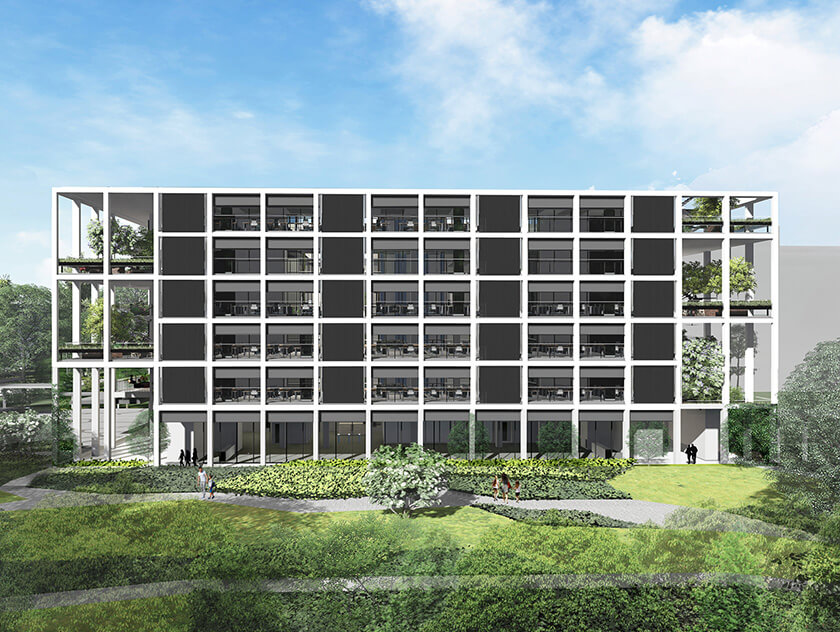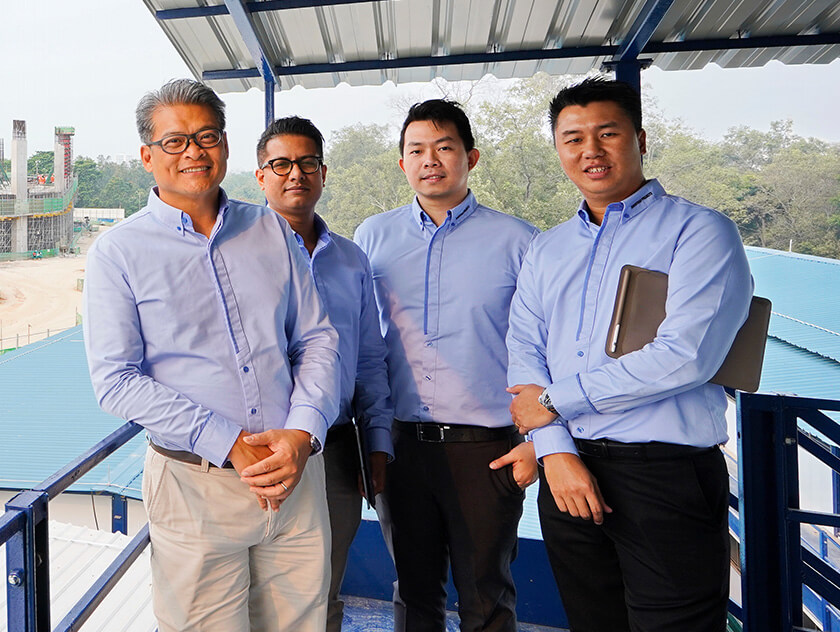Did you know that in the construction industry, an average of 75 to 90 man-days1 are spent on project management-related activities every month? Despite this, project teams across the industry typically achieve only 55% of their monthly targets.
For companies in the Built Environment (BE) sector, these are concerning figures that need to be optimised. But how so?
The answer lies in digital transformation – especially in the areas of project management and collaboration. In this arena, JTC plays a role in accelerating digital transformation by being early adopters of related technologies, offering testbed sites to partners, and organising activities that drive this transformation.
One of these activities is the 'BE Inspired!' webinar series, which aims to provide insights on the opportunities that lie within the BE industry. At the latest 'BE Inspired 4' session, industry experts from Lean Station, Arcadis, Glodon Singapore, and SeaTalk took the stage and introduced a selection of helpful solutions for accelerating digital transformation and enhancing a collaborative environment in the construction industry.
Keen to find out how you can improve on project management in your company? Here are three practices you should take notice of:
Smoothen workflows by digitising your project management process
According to Professor David Chua, the co-founder of Lean Station, many companies fall into the trap of the “vicious cycle of project management". This happens when a missed milestone leads to firefighting within the team, followed by blaming, communication breakdowns, delays and more missed milestones.
To counter this endless cycle, project managers can leverage on digital project management tools to gain clarity on every aspect of the project. A project dashboard, for example, can gather project-related data and visualise insights that project managers can see at a glance. These include which areas of a project are being delayed, what are the causes of each delay, significant bottlenecks, and more.
Can digital project management tools really lead to dramatic results? According to Professor Chua, users of his company's solution reported a 10% reduction in construction duration and a 29% reduction in project management time, among other impressive results.
It's decisive. Give your project managers the data they need to make good decisions, and you'll see positive outcomes.
Accelerate digital transformation with smart solutions
Embracing digital transformation can help optimise your company's project management capabilities. This means being a data-driven company that invests in both hardware and software to deliver the data, analytics and insights you need to make effective decisions.
Mr Sellappalany, a Senior Director at Arcadis, presented the importance of data and analytics with real-life case studies during the “BE Inspired 4" webinar. Participants were surprised to learn that even typically “traditional" business dealing with wildlife, road operations, rail maintenance, and water utilities are utilising smart solutions. He also showcased the Intelligent Remote Inspection System (IRIS), which utilises AI, image recognition technology, and data analytics for construction site monitoring. Initial trials conducted jointly with JTC showed impressive productivity gain during the on-site inspection process, allowing for efficient follow-ups and easy documentation.
The insights that data analytics offers can empower project managers and consultants to make more informed decisions, as well as streamline workflow processes for site inspection and monitoring
Enhance collaborations with technology
Collaborations between your company, contracts and clients are essential. But what if some stakeholders simply don't get technology?
This is a challenge that every project manager faces, but here's how incorporating digital solutions into processes can make collaborations a lot easier.
Let's take digital construction management, for a start. By tapping new technologies like 5D Building Information Model (BIM), you can visualise the progress of buildings and infrastructure. Glodon Singapore shared that their 5D BIM offering can make progress claim reports, checking changes, and collaborations with all stakeholders much more efficient. Additionally, the Cubicost Cloud-based 5D BIM Integrated Digital platform enables the exchange of real time cost data between developers, consultants, and contractors. This increases overall productivity in the project cost management process, aiding decision-making and improving collaboration between various parties across the project lifecycle.
Meanwhile, on-site collaborations between site managers, workers and contractors are another matter altogether.
SeaTalk's Business Partner Manager, Andy Lee, explains that for these stakeholders, communication isn't only a matter of efficiency — it's essential for their safety. Everyone in the team needs to communicate effectively with one another, which includes uploading photos of worksites, completing site inspection forms, submitting details on security issues, and more.
Instead of relying on paper-based submissions or even WhatsApp chats to communicate, managers and their teams can utilise comprehensive collaboration tools to chat, update forms, and submit other information that's necessary for other stakeholders to know about. This way, a consolidation of the project's latest information can be found in one place, thus ensuring that everyone is on the same page.
Best of all, these solutions aren't necessarily costly. Andy points to his company's software, which was started as an internal project to facilitate communication within Sea Group, but now encompasses HR features like leave and claims applications, attendance, and check-ins. There are also plans to expand the software further to include many of the communicative features mentioned above, thereby developing an integrated application for collaboration purposes. Best of all, the software is currently available to everyone for free!


